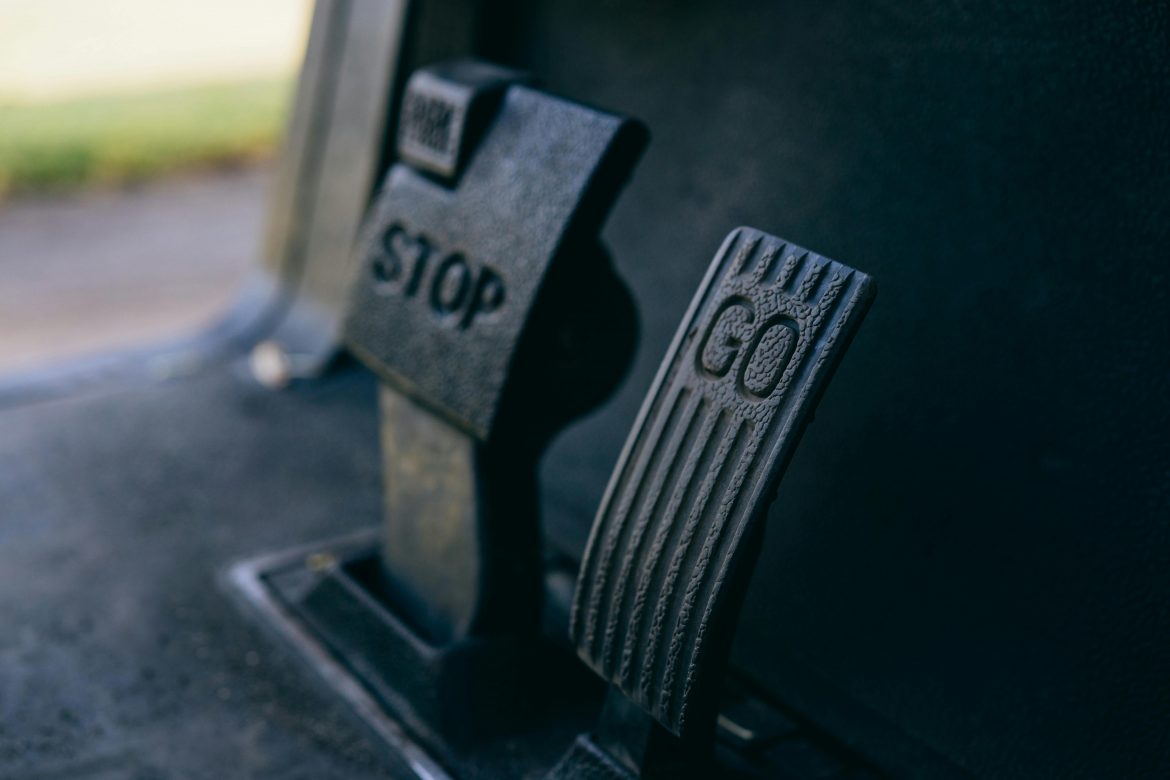How Long Do Brakes Last? What Every Driver Should Know

Brakes are one of the most important safety features in your car. Whether you’re coming to a stop at a red light or avoiding an accident, your brakes need to work properly every time you press the pedal. But like all parts, brakes wear out over time.
So, how long do brakes last? The answer depends on several things like your driving habits, the type of vehicle you drive, and the quality of the brake parts. In this guide, we’ll explain everything you need to know about how long brakes last, how to tell when it’s time for a replacement, and how to make them last longer.
How Long Do Brake Pads Last?
Brake pads are a key part of your car’s braking system, and they don’t last forever. On average, brake pads last between 30,000 and 70,000 miles, but that range can vary depending on how and where you drive. Some pads may need to be replaced as early as 25,000 miles, while others can last well over 70,000 miles with the right care.
The lifespan of brake pads depends on several factors, including traffic conditions, driving habits, vehicle type, and even the materials used in the pads themselves.
Brake Pad Lifespan Overview
Here’s a quick look at how different driving styles and conditions affect how long your brake pads last:
- City driving: Frequent starts and stops, traffic lights, and stop-and-go driving wear out brake pads more quickly. Expect to replace them around 25,000–40,000 miles.
- Highway driving: Long stretches of consistent speed mean less braking. Drivers who spend most of their time on highways can see brake pads last up to 60,000–70,000 miles.
- Heavy vehicles or towing: Larger vehicles like trucks and SUVs—and vehicles used for towing—put more stress on brakes. This can cause pads to wear out sooner than average, especially if driven in hilly or mountainous areas.
- Performance vehicles: Sports cars or high-performance vehicles use stronger braking systems for faster stops, which often results in more frequent pad replacements. Some may need new pads every 20,000–30,000 miles depending on how they’re driven.
What Are Brake Pads?
Brake pads are a vital part of your car’s disc brake system. They work by pressing against the brake rotors (metal discs attached to your wheels) when you press the brake pedal. This contact creates the friction needed to slow down or stop your vehicle.
Every time you brake:
- A small layer of the pad material wears off.
- Heat is generated from the friction.
- Over time, the pad becomes thinner until it no longer works effectively.
Once the brake pad becomes too thin—usually around 3mm or less—it needs to be replaced to keep your braking system safe and effective.
There are different types of brake pads, including:
- Organic pads: Softer and quieter but wear out faster.
- Semi-metallic pads: A balance of performance and durability.
- Ceramic pads: Longer-lasting, less dusty, and quiet, but more expensive.
Choosing the right brake pad for your vehicle and driving style can help you get the best performance and lifespan possible.
How Long Do Brake Rotors Last?
Brake rotors usually last longer than pads—between 50,000 and 70,000 miles or more. However, rotors can wear unevenly or get damaged if brake pads are left on too long or if there’s rust and corrosion.
Some rotors can be resurfaced once (which means smoothed down), but most people replace them when changing brake pads for the best performance.
Factors That Affect Brake Life
Your brakes won’t last forever, but you can control some of the things that affect how long they last. Here are the biggest factors:
1. Driving Habits
- Hard braking: Slamming on your brakes wears them out faster.
- Riding the brakes: Constant light pressure can cause overheating.
- Smooth driving: Gradual stops and coast braking help pads last longer.
2. Type of Driving
- City driving: Frequent stops, traffic, and stoplights wear brakes quickly.
- Highway driving: Fewer stops means less wear and tear.
3. Vehicle Weight
- Heavier vehicles, trucks, and SUVs need more stopping power, which means more brake wear. Towing also puts extra stress on the brakes.
4. Brake Pad Material
- Organic pads: Softer and cheaper but wear faster (20,000–40,000 miles).
- Semi-metallic pads: Longer-lasting and better at handling heat.
- Ceramic pads: Last the longest (up to 70,000 miles) and are quieter, but they’re also more expensive.
5. Environment
- Wet or icy conditions can affect performance. Salt and moisture can cause rust, especially on rotors.
Signs Your Brakes Are Wearing Out
Don’t wait until your brakes stop working to check them. Your car will usually give you warning signs when the brakes are wearing out.
Watch out for:
- Squealing or screeching noises: Often means the pads are thin.
- Grinding sounds: Usually means the pads are gone and metal is hitting metal.
- Vibration or shaking: Could be warped rotors or uneven wear.
- Longer stopping distance: A clear sign your brakes aren’t working right.
- Brake warning light: If the light is on, get your brakes checked ASAP.
- Pulling to one side: Could mean uneven pad wear or a stuck caliper.
If you notice any of these signs, don’t ignore them. Worn-out brakes are dangerous and can damage other parts of your braking system.
How to Check Your Brakes
You don’t always need to be a mechanic to spot worn brakes. Here are a few ways you can check them at home or during regular service:
- Look Through the Wheel
You can often see the brake pads through your wheel spokes. If the pad looks less than ¼ inch thick, it’s time to replace it.
- Listen While You Drive
Squeaks, squeals, or grinding sounds while braking are usually signs that something’s wrong.
- Feel the Pedal
If the brake pedal feels soft or spongy, or you have to press it further than normal, it may mean the pads are worn or there’s air in the brake lines.
- Get a Professional Inspection
Have your brakes checked every 10,000–15,000 miles during routine oil changes or tire rotations.
What Happens If You Don’t Replace Worn Brakes?
Driving with worn-out brakes isn’t just unsafe—it can also cause costly damage.
If brake pads wear down too far:
- Brake rotors can be damaged, requiring more expensive replacements
- Your stopping distance increases, which is a major safety risk
- Calipers can overheat or seize, leading to even more repairs
Ignoring brake problems can lead to accidents or breakdowns. It’s always better to fix brake issues early before they get worse.
Tips to Make Your Brakes Last Longer
While you can’t make your brakes last forever, you can take steps to extend their life and keep them in good shape.
- Drive Smoothly
Avoid hard stops and try to coast to a stop when you can. Use engine braking when going downhill.
- Don’t Ride the Brakes
Keep your foot off the brake pedal when you don’t need it—especially on long descents.
- Lighten the Load
Remove heavy items from your trunk. The less your car weighs, the easier it is on your brakes.
- Keep Tires Properly Inflated
Underinflated tires can increase stopping distance and brake strain.
- Get Regular Inspections
Catch problems early with routine brake checks. It’s easier to replace pads than fix a full brake system failure.
How Long Do Brakes Last on Average?
Let’s summarize the average lifespan for the main brake components:
| Part | Average Lifespan |
| Brake Pads | 30,000–70,000 miles |
| Brake Rotors | 50,000–70,000 miles |
| Brake Calipers | 75,000–100,000 miles |
| Brake Fluid | Replace every 2–3 years or as needed |
Always check your owner’s manual for recommendations specific to your car.
How Do Brakes Compare to Other Maintenance Items?
When planning car maintenance, it’s helpful to compare your brakes to other parts that wear out. Brakes usually wear out faster than:
- Tires (usually 40,000–80,000 miles)
- Spark plugs (typically 60,000–100,000 miles)
- Battery (usually lasts 3–5 years)
Your brakes are one of the most frequently replaced safety systems in your car, so don’t skip inspections.
When Should You See a Mechanic?
If you’re unsure about your brakes or hear any unusual sounds, it’s best to have a professional take a look. You should visit a mechanic if:
- Your car makes grinding or squealing noises
- The brake pedal feels soft or slow to respond
- Your brake warning light is on
- The car pulls when braking
- You notice fluid leaks near the wheels
Brakes are too important to take chances. A quick check can prevent a serious problem down the road.
Final Thoughts
So, how long do brakes last? It depends on your driving style, environment, and the type of brakes your vehicle uses. Most brake pads last between 30,000 and 70,000 miles, while rotors typically last a bit longer.
By paying attention to warning signs, practicing smooth driving habits, and scheduling regular brake inspections, you can help extend the life of your brakes and stay safe on the road. Remember, it’s always better to replace brake components early than to risk a serious safety issue or costly repairs later on.
Staying on top of brake maintenance is one of the smartest things you can do as a car owner—both for your safety and your wallet.


